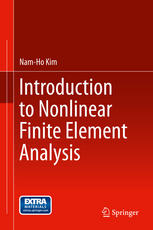

Most ebook files are in PDF format, so you can easily read them using various software such as Foxit Reader or directly on the Google Chrome browser.
Some ebook files are released by publishers in other formats such as .awz, .mobi, .epub, .fb2, etc. You may need to install specific software to read these formats on mobile/PC, such as Calibre.
Please read the tutorial at this link: https://ebookbell.com/faq
We offer FREE conversion to the popular formats you request; however, this may take some time. Therefore, right after payment, please email us, and we will try to provide the service as quickly as possible.
For some exceptional file formats or broken links (if any), please refrain from opening any disputes. Instead, email us first, and we will try to assist within a maximum of 6 hours.
EbookBell Team

4.3
68 reviewsThis book introduces the key concepts of nonlinear finite element analysis procedures. The book explains the fundamental theories of the field and provides instructions on how to apply the concepts to solving practical engineering problems. Instead of covering many nonlinear problems, the book focuses on three representative problems: nonlinear elasticity, elastoplasticity, and contact problems. The book is written independent of any particular software, but tutorials and examples using four commercial programs are included as appendices: ANSYS, NASTRAN, ABAQUS, and MATLAB. In particular, the MATLAB program includes all source codes so that students can develop their own material models, or different algorithms. Please visit the author's website for supplemental material, including PowerPoint presentations and MATLAB codes, at